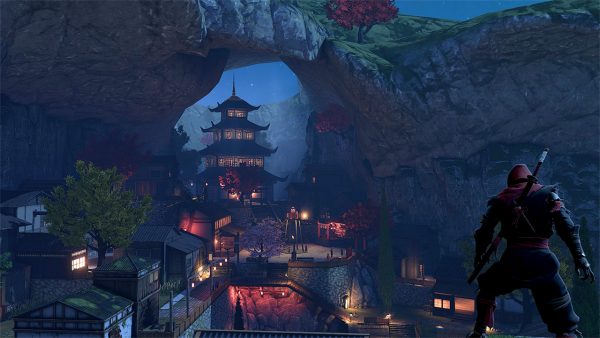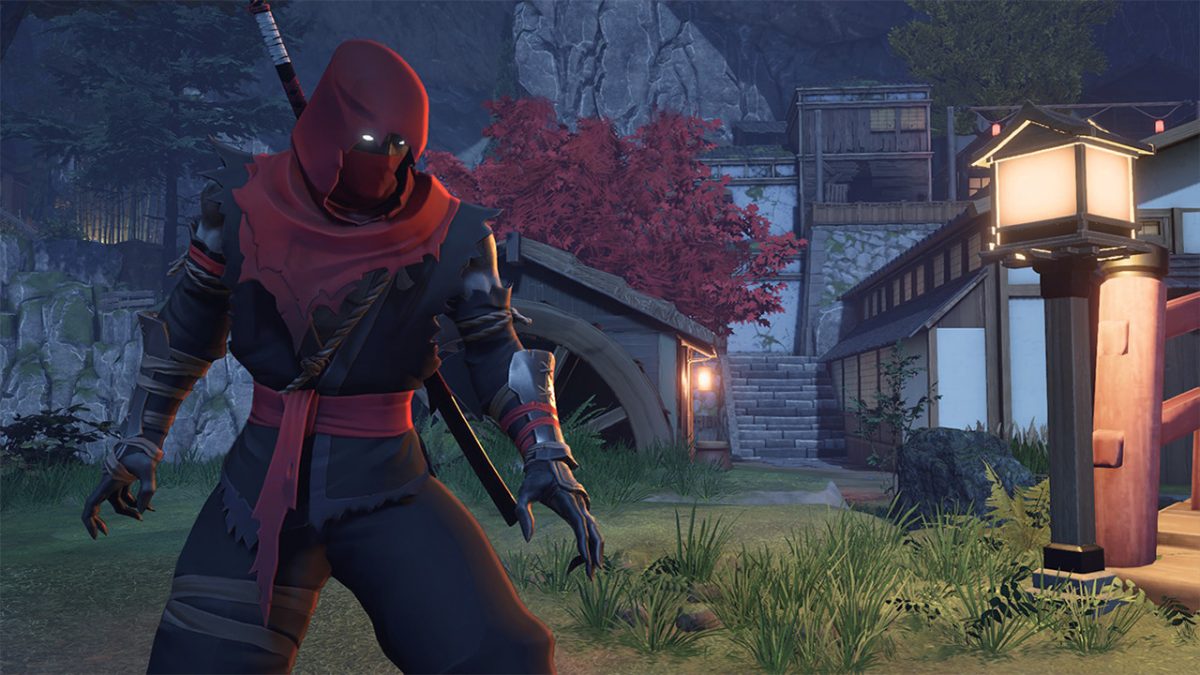Stealth games are staples of the video game industry. Some of the most well-known titles in the realm of gaming are from this genre. Games like Splinter Cell, Hitman 3, and Assassin’s Creed have left their mark in the industry. However, with the advancements in gaming, newer concepts such as Aragami 2 have come to prominence. Check out what separates Aragami 2 from the field and what does it offer.
What Is Aragami 2?


Aragami 2 is a stealth game in a third-person perspective set in a version of medieval Japan. You are an Aragami, one who walks and controls the shadows. However, some things and individuals threaten you, and your people, which you need to eliminate. Use your abilities to accomplish missions and take out threats, find the origins of your powers and look for a cure to your condition. The fate of all Aragami rests in you.
Aragami 2 was released on September 17 this year. It’s available for players on Xbox One, Xbox Series X/S, PS4, PS5, and PC.
Check Aragami 2 for the PS5 on Amazon
Aragami 2 Game Review
Gameplay, Combat, and Movement


The gameplay of Aragami 2 is a pretty diverse one, focusing on stealth, combat, and movement. In addition to this, Aragami 2 has a co-op mode that can lead to some incredibly fun situations.
In terms of movement, the Aragami has a fair few things to take note of. For one, they’re incredibly fast and can dash anywhere they wish, from the ceilings to walls, to other unaware enemies. They’re also more durable now compared to the previous game, as they can take more hits compared to the instant death of Aragami 1. In addition to this, the game is more focused on RPG mechanics rather than stealth.
Also Read: Best Role-Playing Games (RPGs) of All Time Chosen by Gamers
Stealth has always been the core of Aragami’s first game. However, Aragami 2 did away with some of that reliance and went with a system that improves an Aragami’s skillset for battle and stealth. Players can now fight toe to toe with the various enemies in the game, allowing for more player expression. In addition to this, the game has specific skill sets that cater to various ninja abilities that can help players in various missions.
Do note that players can’t get all of the skills in the game. However, this is all in the service of its ability to co-op with two other players. With this addition, players can designate various roles to the Aragami ninjas that do various missions with each other. One Aragami can be the distraction, fighting guards and other enemies. Another can be a support, sneaking inside to scout and taking out key targets. And lastly, the third Aragami can be the one to accomplish the mission in question, doing tasks to achieve mission completion. All in all, there’s a lot of depth in the multiplayer, which is something to admire.
Graphics, World, and Level Design


In terms of graphics and world design, there will be some that would say that Aragami 2 is a downgrade from the first Aragami game. That’s not the case here. The watercolor-like look lends itself well to the game’s aesthetics, and the design of the various areas and worlds look as if they’re painted with various tones and shadows. Of course, these shadows can be used by your Aragami to sneak around to do kills and take the necessary items for mission completion.
However, Aragami 2’s level design is something that some people will have problems with. The game is made to have a linear progression, with missions leading to each other. There’s a hub area, yes, and it’s gorgeous in design. It’s on this hub area that you relax a bit, get cosmetic gear, equip runes, learn better shinobi moves, and listen to some mission hints. However, when you see a hub area, you’d usually expect to have an open-world game, which is not the case here.
The game’s various levels are incredibly diverse, however, and you can fully expect to be lost in them as well. Aragami 2’s levels have a lot of ways for players to get in and out of areas, with verticality playing a central role. The player’s Aragami can dash towards walls to circumvent guards, hide from sightlines, and a lot more. They can also use the terrain and verticality for a more sinister variant of killing every enemy in sight. Still, it’s really up to the player how they’ll approach Aragami 2’s levels.
Story and Setting


Aragami 2 takes place 100 years after the first game in Ancient Japan. You play as an Aragami, a supernatural shinobi afflicted by a disease that wreaks havoc on the mind and body. They do, however, control Shadow Essence, allowing them to use the shadows for their bidding.
However, you and your clan are the last free Aragami in Japan, and your job is to keep it that way. To do this, you need to… Actually, scratch that. The story isn’t that important here. Aragami 2’s main claim to fame is the missions and the challenges that these missions put to the player. Nothing more and nothing less. The story adds some spice to it, but it’s a bit annoying to have to read through it as the game has no voice-over. Still, it’s there if the player wishes to know about the game’s lore.
Sound Design
In terms of sound design, Aragami 2 is similar to its predecessor. There’s almost no change in the game when it comes to its sound design. Enemies do have unique sound cues when they discover, get killed, and knocked out by the Aragami though, so that’s a plus.
Other than that, there’s little to no voice acting in the game, with dialog being told through text. It’s nothing much, but it’s noticeable.
Is Aragami 2 Worth Playing?


If you’re a big fan of the first Aragami and want to experience some stealthy ninja action, then yes. However, do note that there’s less emphasis on stealth compared to the first game. Aragami 2 is a lot more forgiving to mistakes compared to the first Aragami, but that’s not a bad thing.
Aragami 2 vs Similar Games
Now that we’ve talked about Aragami 2, let’s talk about games like it. We’ll start with Sekiro: Shadows Die Twice, then the Dishonored Series, and finally, the Assassin’s Creed Series.
Sekiro: Shadows Die Twice


It’s quite a surprise for renowned developer studio From Software to create something that’s not Dark Souls or Souls-like. But then again, Miyazaki-san still surprised us when he released Sekiro: Shadows Die Twice. The game was a great addition to the stealth genre, which adds a metric heap of action as well.
Above all else though, the game is made with action in mind, but players have the option to stealth their way to victory. The game’s world is big. Though not an open-world, it compensates with verticality and a lot of juicy lore. The game looks gorgeous, the combat is stellar. And overall, the game is well put and well made. It’s honestly the best stealth game that came out during its time.
Dishonored Series
Next on the list is the Dishonored series. First of all, both the games do have a focus on stealth, but you can also go for the throat and start killing everyone and everything. There’s just one problem with the latter option. And that’s the fact that the amount of bodies you leave on the streets directly results in what ending the player will get. This is something cool about the Dishonored series as your very actions affect the game’s story.
The amount of dead bodies the players leave behind doesn’t just affect the ending, though. The entirety of Dunwall is currently suffering the worst pandemic they have had in years. The entire city lives in fear of the Rat Plague, something that the player sees constantly. Thus, if they keep leaving dead bodies everywhere, they’ll cause even more chaos. This leads to even more guards, more obstacles, and more death as Weepers start appearing everywhere.
If the player’s going for the stealthy and nonlethal options when playing though, then everything is lighter. People don’t fear you as much, and you generally have better karma. Still, this allows for a lot of replayability, as you can go for the stealth option, or guns blazing. The upgrades for the player character reflect this as well, as they can improve their weapons and various implements to kill more efficiently or sneak better.
Do note though that the game’s crossbow isn’t just limited to normal bolts and incendiaries, there are also sleep darts. If you’re going or the Low Chaos ending, for the love of God, use sleep darts, you’ll thank me later. Still, that’s the Dishonored series in a nutshell.
Assassin’s Creed Series
Last but not least is the Assassin’s Creed series which kind of went the wrong way when it comes to stealth gameplay in the later games. For one, the games seem to have gone for a more RPG style rather than stealth. It’s kind of sad. The Assassin’s Creed series has always been one of the mainstays when it comes to stealth-based games that it’s hard to see the current iterations now.
Don’t get us wrong though, the games are fun, really fun. But the addition of the open-world helped and hindered the game a bit in terms of its stealth. Yes, there’s a lot more to explore, but the games suffered for it due to being overloaded with stuff that it’s no longer fun.
The first forays into the open-world genre were great. Flag and Rogue, in particular, were very memorable. But the most recent entries leave much to be desired.

























